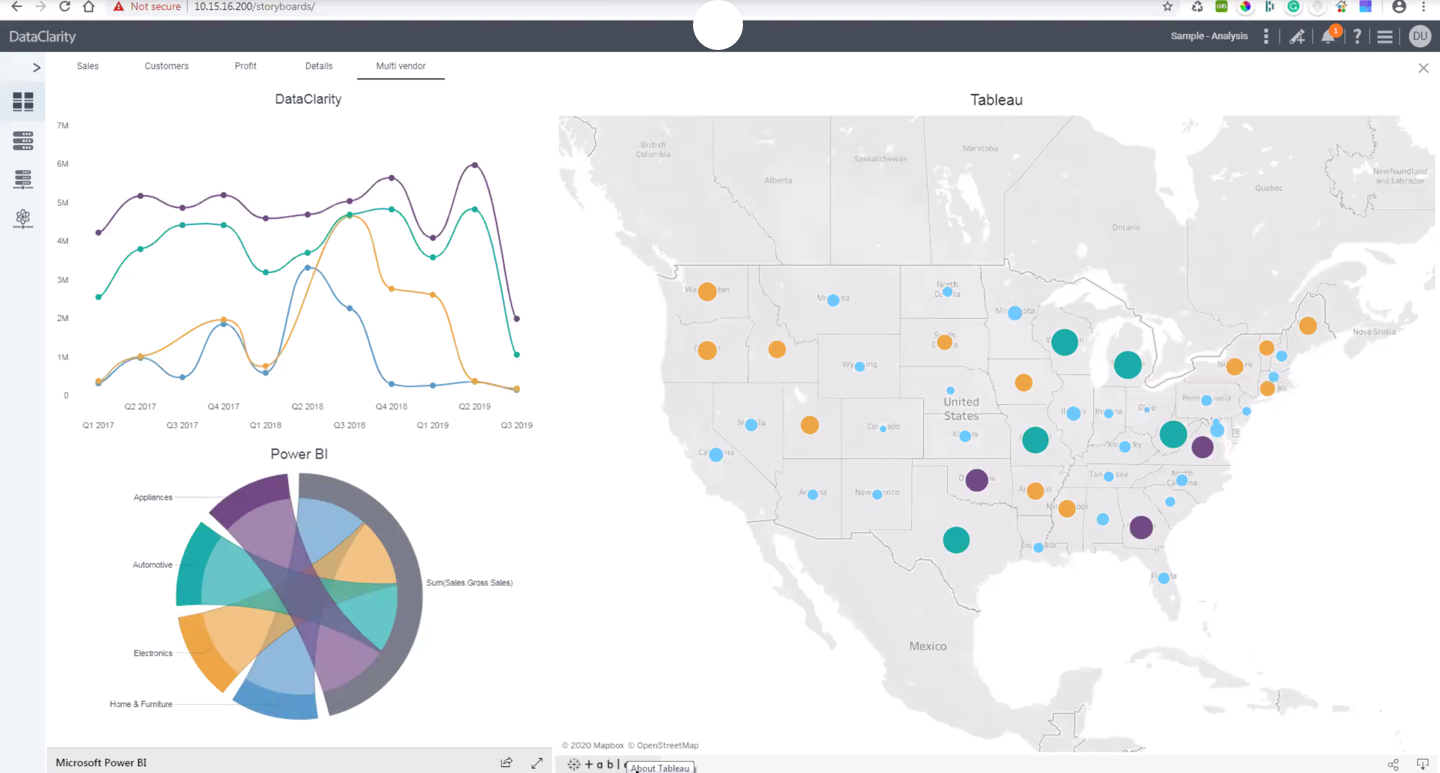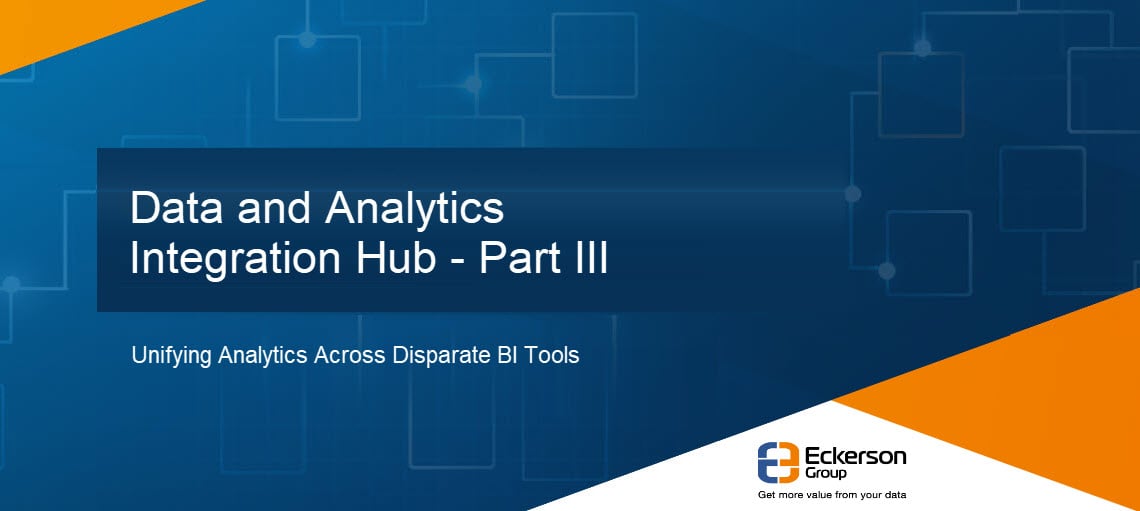With IT budgets declining, organizations are less willing to serve as their own systems integrators to stitch together tools and technologies need to support business user workflows. Rather than purchase purpose-built tools, organizations now want to implement all-in-one platforms that integrate disparate data sources and business intelligence (BI) tools into a logical whole.
The first article in this series introduced data and analytics integration hubs as an emerging all-in-one platform to support the data analytics requirements of business users. The second article examined how the platforms provide a logical view distributed data and support the data analyst workflow. This final article examines how the hubs deliver a single view of multiple BI models and reports and support most BI, analytics, and data science requirements.
Universal BI Semantic Layer
Most companies are saddled with several BI and analytics tools. Although they may have an enterprise standard, not all departments and business units use it. Without enterprise support, these departments build business logic into their reports, creating data fiefdoms that, in effect, hoard data, insights, and knowledge. Unlocking these BI fiefdoms is one of the major advantages of a data and analytics integration hub.
The hub connects to every data and BI source via special connectors and a data virtualization engine. On the BI side, for example, these hubs allow Tableau users to query IBM Cognos Analytics Framework Manager models. The Tableau users see the Cognos models as part of their workbook schema and can manipulate that data, just as if it was modeled and managed in Tableau directly. A security framework with granular permissions and single sign on provide business users with seamless access to distributed resources.
Besides connecting two BI tools, a data and analytics integration hub enables BI administrators to combine the models of all BI tools into a universal semantic layer. This way BI users can access objects from any other BI tool, no matter what BI tool they’re using. The universal semantic layer makes it easy for them to create dashboards that contain side-by-side visualizations from multiple BI tools. (See figure 1.)
Figure 1. Side-by-Side Visualizations from Multiple BI Tools

BI Portal. The hub also lets administrators create a universal BI portal that combines the reports of all BI tools into a single catalog that is personalized based on a user’s role, department, and preferences. The portal displays thumbnails of reports and dashboards along with descriptive metadata. When users click on the thumbnail, it opens the report in the hub so users can view and interact with it.
BI and Analytics Functionality. But more than just an integration engine, a data and analytics hub is a full-fledged BI and analytics tool in its own right. Although it can provide users access to Tableau, MicroStrategy, Power BI and other BI tools, it offers built-in functions for dashboard creation, visual analysis and exploration, spatial analytics, and data science (i.e., R and Python coding and execution). Many companies eventually migrating to using the embedded BI and data science functionality of data and analytics integration hubs because the features are integrated with its data capabilities, providing a seamless workflow for data analysts. (See Part II of this series.)
Versatility and Pricing
Versatility. The versatility of a data and analytics integration hub gives customers options. They can purchase the platform as a BI tool for business users and then layer in its data catalog and preparation features for power users. Or they can buy the hub for its data connectivity and preparation features and then expose power users to its visual analysis, geospatial, and data science functions to support deep analysis of their data sets. Or any combination.
Pricing. The best data and analytics integration hubs offer simple user-based pricing that doesn’t punish organizations for the number of BI tools or data sources they have or number of queries they execute. They also offer affordable pricing, making it a no-brainer for organizations to expand usage of the platform as new needs arise.
Conclusion
The trend in data analytics today is towards convergence. Data tools are converging into data platforms and BI and analytics tools are converging into analytics platforms. But data and analytics integration hubs integrate these two types of platforms into a seamless whole, providing end-to-end support for business user workflows. Organizations that want one-stop-shopping for all their business user data and analytics needs should consider a data and analytics integration hub.

